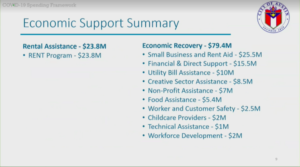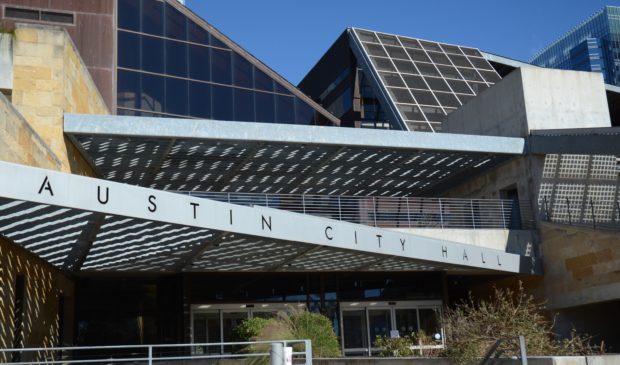Council members stake out priorities for federal Covid-19 aid ahead of vote next week
Friday, May 29, 2020 by
Chad Swiatecki City Council will vote next week on the plan for spending federal money devoted to pandemic relief, anticipating significant changes from the initial outline presented by staff on Thursday.

During a special meeting dedicated to allocating federal dollars – much of which will come from the Coronavirus Aid, Relief and Economic Security (CARES) Act – Council members looked at how staffers had initially planned to address community needs around public health, emergency response and economic recovery. Between CARES Act funding and expected reimbursements from the Federal Emergency Management Agency and other federal programs, the city will have nearly $270 million on tap for local efforts related to the pandemic.
Members were broadly in support of the suggested amounts and uses for public health ($62.9 million) and emergency response ($105.5 million), but the economic recovery “bucket” with $103.2 million for uses such as small business aid, creative sector support and workforce development efforts looks to be the subject of much analysis and possible adjustment ahead of next week’s Council meeting.
The most direct concern came from Council members who have expressed a desire to provide direct financial assistance to residents, above and beyond existing programs for rent and food aid. With local economist Jon Hockenyos forecasting that the real unemployment rate for the area will hit 25 percent – the current official number is around 12 percent – Mayor Pro Tem Delia Garza said the city’s main priority should be helping its most vulnerable residents.
“I’m really grateful for the money that was committed to RISE (Relief in a State of Emergency fund) and I know we’re committing more to rental (assistance) and those programs, but I want to point out that there is no additional money in this framework for other needs aside from rental and food,” she said.
“Not having any additional allocation to families who are up to 25 percent of Austinites facing a dire situation right now and we have no additional allocation for basic needs and direct financial assistance … I don’t know where we move or how we get them but I think our first priority should be vulnerable populations that do not have any access to help or stimulus money.”
Garza also suggested the city look for ways to provide additional support for nonprofit groups helping residents in need, aside from an aid package approved earlier this month that provides $6 million in operation funding to groups in specific service sectors.
Council Member Greg Casar suggested the city could help more residents directly by shifting money away from small businesses, or at least those that have already received some form of federal aid such as the Paycheck Protection Program. He also said the $5 million in new money suggested to help the creative sector could be opened up to all workers who have lost income due to the pandemic.
“What we’re all working on here is a balance and we’re never going to be able to have enough money for any given need. The question is, what is the proportionate balance that we strike?” he said. “Given the amount of federal support in some areas but the lack of federal support for other areas, I fall toward allocating money toward public health and emergency needs and then allocating money to where we see the greatest need for people who don’t have access to other funds.”
As a possible compromise, Council Member Jimmy Flannigan suggested that money initially allocated for business aid programs that would have a longer rollout be used in the short term for direct assistance to residents.
Mayor Steve Adler said daily briefings on the disease spread suggest the city will likely need to have some of the federal dollars available in the fall when another wave of infections is expected to take place.
“I would imagine every month these numbers could easily get re-juggled as we see more, and being able to predict right now what the lay of the land will be through December would be really hard to do. As we look at the models for how this disease could run its course, we could be looking at two or three more surges, or no more surges,” he said. “Everybody is going to want to add more dollars, but from where I’m sitting I wish we had more money in contingency to help with that (surge) because I’m scared we’re going to be looking at that in the fall.”
The Austin Monitor’s work is made possible by donations from the community. Though our reporting covers donors from time to time, we are careful to keep business and editorial efforts separate while maintaining transparency. A complete list of donors is available here, and our code of ethics is explained here.
You're a community leader
And we’re honored you look to us for serious, in-depth news. You know a strong community needs local and dedicated watchdog reporting. We’re here for you and that won’t change. Now will you take the powerful next step and support our nonprofit news organization?










